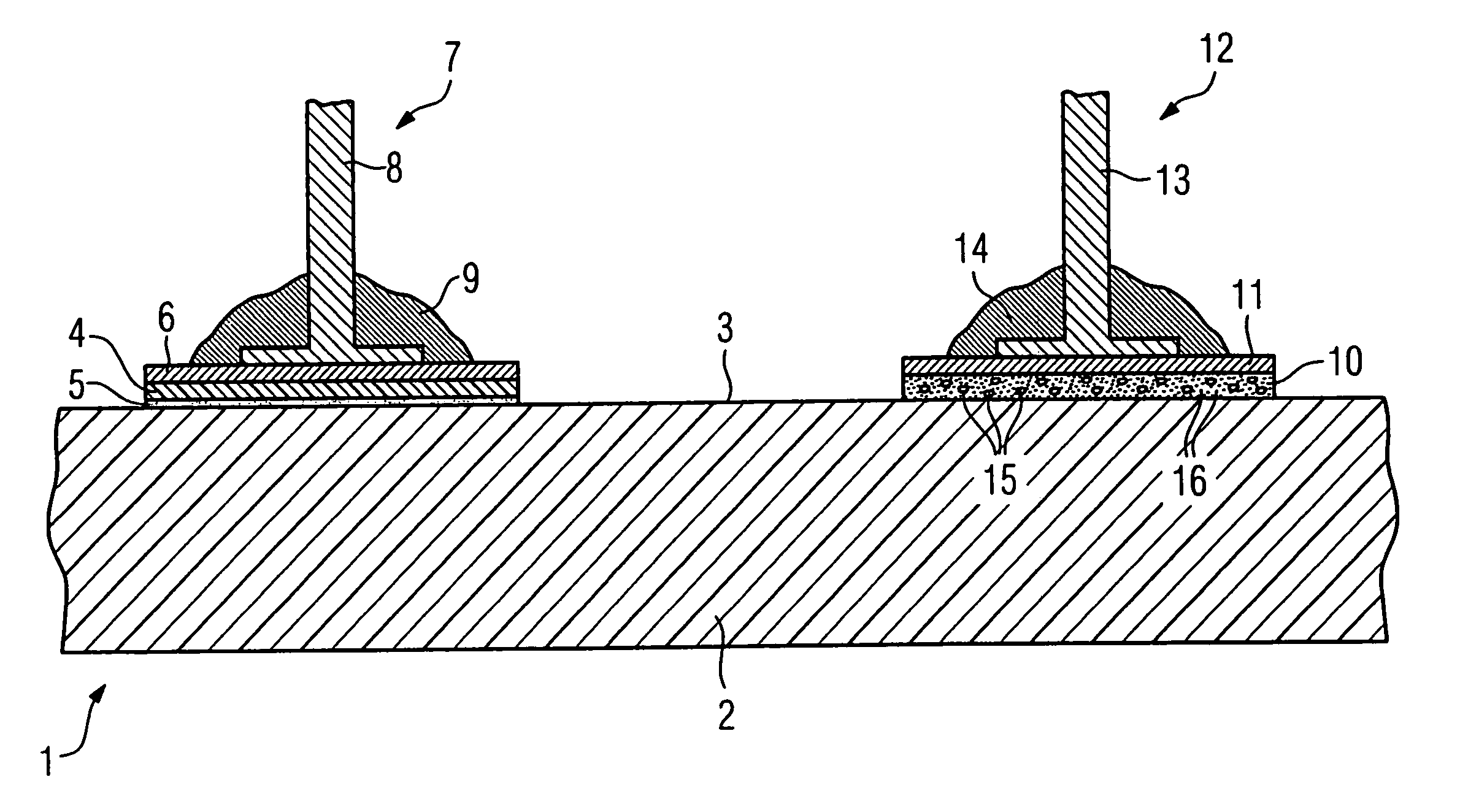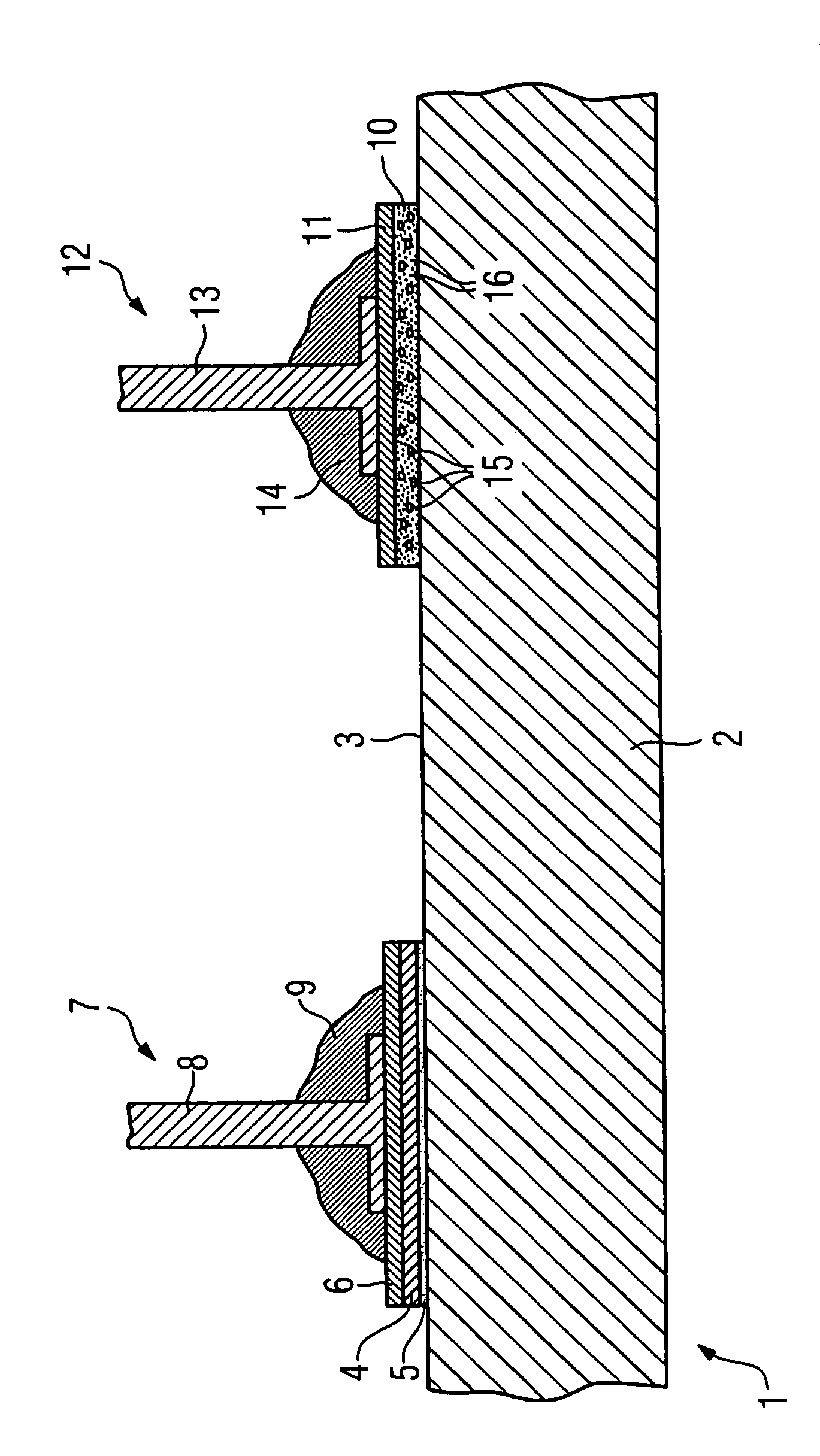Plastic component having heat resistant hardened resin at thermal-attachment connection points
a technology of thermal connection and hardening resin, which is applied in the direction of thermoplastic polymer dielectrics, dielectric characteristics, transportation and packaging, etc., can solve the problems of damage to the polymer substance, failure to achieve electrical contact of the soldered element, and impairment of the bonding of the surface metallization, etc., to achieve simple and cost-effective production
- Summary
- Abstract
- Description
- Claims
- Application Information
AI Technical Summary
Benefits of technology
Problems solved by technology
Method used
Image
Examples
Embodiment Construction
[0022]A sectional view of a portion of an inventive plastic component 1 is shown in the single FIGURE, the plastic component 1 in this example being a housing component of a sheath wave barrier for a magnetic resonance system. The plastic component has a component carrier 2, for example a laminar housing cover plate on its top side 3. The component carrier 2 is composed of a commercially available thermoplastic material of any type.
[0023]In order to be able to contact electrical elements (which are not shown in detail in the FIGURE) with electrical elements located within the housing or the like (likewise not shown in detail), it is sometimes necessary to arrange these on the outside in the region of the surface 3 and to electrically contact these with a surface metallization. This ensues in the course of a soldering method. In order to be able to effect this without thermal damage of the component carrier, a thermal blocking layer in the form of a plastic layer that is resistant to...
PUM
| Property | Measurement | Unit |
|---|---|---|
| thickness | aaaaa | aaaaa |
| thickness | aaaaa | aaaaa |
| thickness | aaaaa | aaaaa |
Abstract
Description
Claims
Application Information
 Login to View More
Login to View More - R&D
- Intellectual Property
- Life Sciences
- Materials
- Tech Scout
- Unparalleled Data Quality
- Higher Quality Content
- 60% Fewer Hallucinations
Browse by: Latest US Patents, China's latest patents, Technical Efficacy Thesaurus, Application Domain, Technology Topic, Popular Technical Reports.
© 2025 PatSnap. All rights reserved.Legal|Privacy policy|Modern Slavery Act Transparency Statement|Sitemap|About US| Contact US: help@patsnap.com


